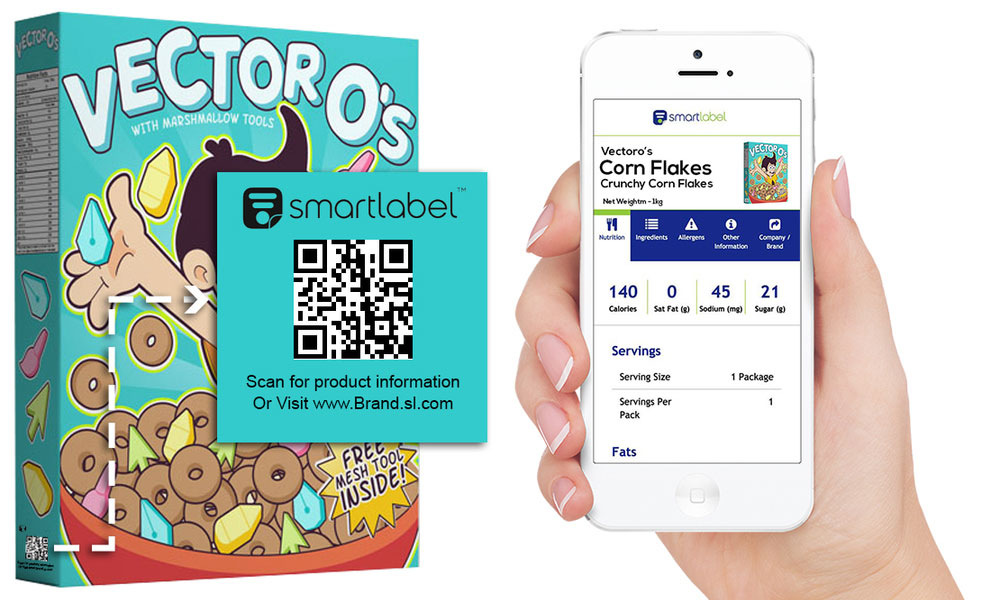
SmartLabel Initiative: Grocery Manufacturers Launch New Transparency Play
The Grocery Manufacturers Association announced a plan this week to get food manufacturers to reveal what's in common varieties of food. While the QR code-driven SmartLabel Initiative has wide industry backing, some critics say it's no replacement for properly labeling foods with GMOs.
Has the food industry discovered a middle ground on labeling genetically modified organisms?
It’s too soon to say, but one new initiative promises to put a lot of extra information in front of consumers.
The Grocery Manufacturers Association (GMA) announced on Wednesday the fruit of its new SmartLabel Initiative, a set of QR codes on food products that offer data beyond the traditional nutrition label on most foods—including whether the product uses GMOs.
“People want more information and are asking more questions about products they buy, use and consume, and SmartLabel puts detailed information right at their fingertips,” GMA President and CEO Pamela G. Bailey said in a news release. “SmartLabel is a modern technology that will change how people shop and will help them get answers to questions they have on the products they purchase when they want that information.”
The initiative, which already includes more than 30 major food makers, will allow consumers to scan QR codes using their smartphones to learn more about what’s in their food. Eventually, they will be able to do so through a dedicated app. Some stores will make the information available to consumers who don’t own smartphones. In addition, consumers can get the information from food manufacturer websites.
Companies including ConAgra Foods, General Mills, Hershey, Nestle, and numerous others have already pledged to support the plan, with some products on the shelves with SmartLabel codes by early 2016 and nearly 30,000 products with the special labels by late 2017.
Not the First Mover
While SmartLabel will likely draw attention due to its wide backing, it’s not the only attempt to add an interactive layer to food labeling. The startup OpenLabel offers a similar service by mining publicly available data from a variety of sources, including the nonprofit organizations Sunlight Foundation and the Center for Science in the Public Interest.
Another nonprofit that offers a similar service, the Environmental Working Group (EWG), didn’t welcome the SmartLabel approach. In a blog post, EWG Senior Policy Analyst Mary Ellen Kustin argued, citing polling from the Mellman Group, that most people don’t use QR codes and prefer simple GMO labels on packaging.
“Just like the Grocery Manufacturers Association’s ill-fated Smart Choices initiative, Smart Label would make it harder, not easier, for consumers to learn basic facts about their food,” Kustin wrote. “It’s time for big food companies like Coca-Cola and General Mills to trust us to make our own decisions about what we feed our families.”
GMA, however, pointed to research from the Benenson Strategy Group that found 75 percent of people said they would be likely to use SmartLabel in researching the foods they eat.
While skeptics of the plan will likely persist—especially considering that GMA has become a key opponent of mandatory GMO labeling—others have been more encouraging of the approach.
“Rather than fighting against transparency on GMOs, food companies should be fighting to provide much more transparency all around, so that people have the opportunity to see genetic modification in its proper, complex context,” Grist‘s Nathanael Johnson wrote, adding that SmartLabel or a similar approach shows “real potential” as a solution to labeling controversies.
(Handout photo/Qliktag)






Comments